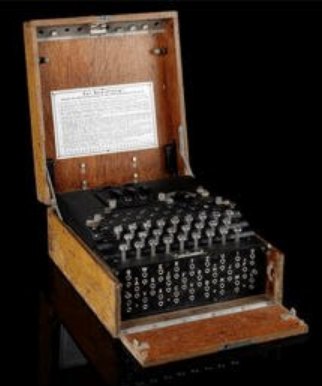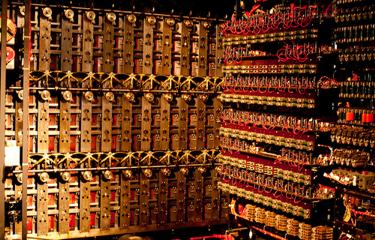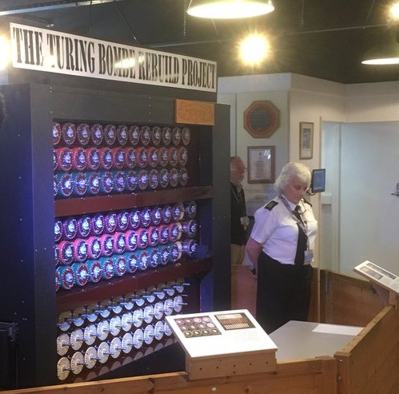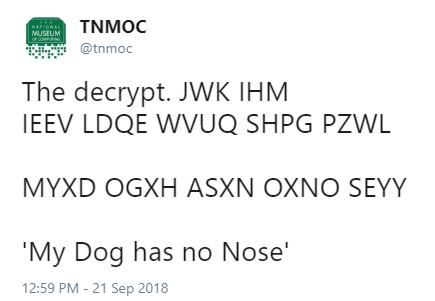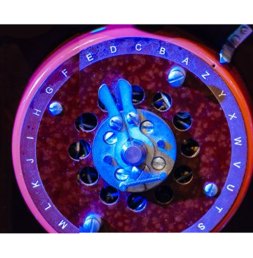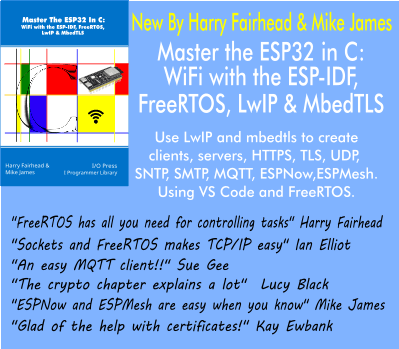| Turing Bombe Breaks Enigma Messages Again |
| Written by Sue Gee | |||
| Sunday, 23 September 2018 | |||
|
The replica of the Turing-Welchman Bombe has proved that it is more than a museum exhibit. On September 21, in a live video link-up between England and Poland, it succeeded in cracking a message scrambled by an original Enigma machine.
Code breaking at Bletchley Park is widely recognized as having shortened World War II by around 2 years. However, it was Polish mathematicians, Marian Rejewski, Jerzy Rozycki and Henryk Zygalski, who first broke the Enigma code before the outbreak of war and this historical reconstruction commemorated 80 years since the Poles shared their research with the allies. For more information about the Polish "bomba kryptologiczna" see our history article, Codebreaking and Colossus. The Bombe, an electromechanical device created by Alan Turing and Gordon Welchman and built by Harold Keen and engineers at the British Tabulating Machine Company, was given its name to acknowledge the work of the Poles. It was used throughout the war to automate the decryption process to reveal enemy Enigma messages about their current operations. Specifically, according Welchman, the Bombe was used: "to reduce the assumptions of wheel order and scrambler positions that required 'further analysis' to a manageable number". This involved discovering the daily settings of the Enigma machines on the various German military networks: specifically, the set of rotors in use and their positions in the machine; the rotor core start positions for the message and the stecker partner of a specified letter for a set of wheel orders. Manual techniques were then used to complete the decryption process. Over the course of their operation Bletchley Park 210 Bombes helped decode up to 5,000 intercepted message per day and at the end of the war all were destroyed.
The replica Bombe used for Friday's demo was built, over a period of 8 years by the team of enthusiast engineers using scavenged and spare parts and was completed in 2007. It contains 36 Enigma equivalents, each with three drums and wired to mimic the same enciphering process as real Enigma cipher machine motors. Earlier this year it was rehoused at The National Museum of Computing (TNMOC) in a new Bombe Gallery, located in Block H hut, thanks to raising £60,000 through a crowd funding effort.
The Bombe Challenge was part of a live video link-up between TNMOC and the World Computer Congress being held in the Poznan Supercomputing Centre, Poland, as a tribute to Polish cryptographers and wartime Bletchley Park staff. At the conference, the audience also heard papers relating to cryptography, the Bombe and Alan Turing from presenters including Sir Dermot Turing, nephew of Alan Turing whose book, X, Y & Z: The Real Story of How Enigma Was Broken, was published earlier this month. The challenge was for the Bombe at TNMOC to decipher messages scrambled by an Enigma machine in Poland. As with World War Two messages, the code-breaking team began with an educated guess about the content of an initial message, known as the "crib" sent from Poznan and this was used to set up the Bombe. Paul Kellar, a member of the Bombe reconstruction team who helps to keep a replica machine running at the museum, explained that it the machine then cranked through the millions of possible combinations until it came to a "good stop", which indicated that the Bombe had found key portions of the settings used to turn readable German into code. Then it was just a matter of time before the 12-strong team discovered the key that enabled them to decrypt messages sent from Poland throughout the day. Ruth Bourne, a wartime Bombe operator who was also part of the TNMOC team, confirmed that the methods they used were authentic, but that the effort lacked the over-riding stress and tension that accompanied the wartime work. "During the war, there was a feeling of great pressure because the Enigma [encryption] keys changed at midnight so everyone was pushing to get enough information before it went out of date. The only high spot was when your machine happened to find the 'good stop' and you felt pleased about that." The challenge to find the Enigma key and the associated presentations are available in a 7-hour video on the WWC 2018 Enigma Live site.
More InformationRelated ArticlesBombe Goes On Display To Celebrate Alan Turing Anniversary Campaign for Recognition of Polish Enigma Codebreakers Breaking Enigma Code In Minutes Simulating the Turing-Welchman Bombe With A Pi Rare Three-Rotor Enigma Machine Up For Auction To be informed about new articles on I Programmer, sign up for our weekly newsletter, subscribe to the RSS feed and follow us on Facebook or Linkedin.
Comments
or email your comment to: comments@i-programmer.info <ASIN:0750987820> <ASIN:1784700088> <ASIN:0947712348> <ASIN:0750987707> |
|||
| Last Updated ( Sunday, 23 September 2018 ) |
